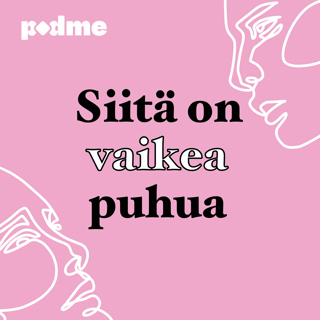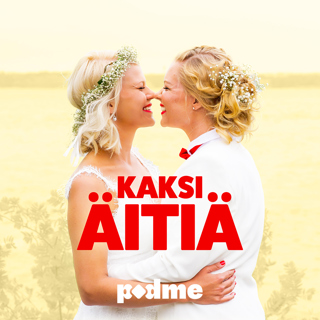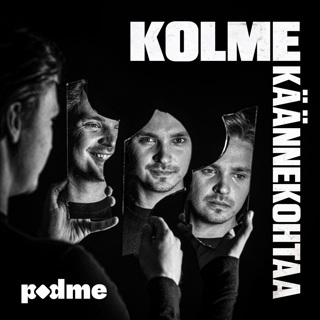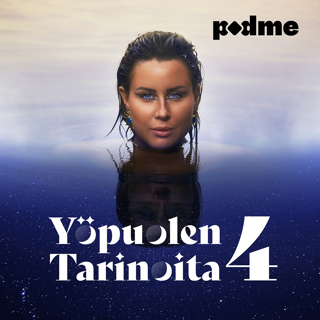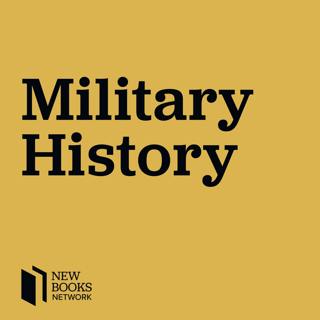
David Edgerton, “Britain’s War Machine: Weapons, Resources and Experts in the Second World War” (Oxford UP, 2011)
My grandfather joined up when the Second World War broke out, but he was soon returned to civvy street as he was much more valuable employing his mechanic’s skills to fight the Nazis from a factory in Newcastle. He ended up making the parts of the spot lights that were used to guide anti-aircraft batteries (and my grandmother made parachutes, just over the River Tyne in Gateshead). Although this was not half as exciting to find out about as a young boy as discovering that he was in fact a Commando or part of the Long Range Desert Group, what my grandfather was part of was vital to the defeat of Nazism. In his excellent book, Britain’s War Machine: Weapons, Resources and Experts in the Second World War (Oxford University Press, 2011), David Edgerton is all about this crucial non-military part of Britain’s war with Germany, and it sets about challenges perceptions almost from the front page. His argument is that Britain was actually far more able and well resourced than commonly thought. It entered the war as the richest per-capita nation in the world, a ‘world island’ interconnected with markets across the globe. It had industry and it had a formidable military. Even after France fell, Britain still had its empire to fall back on, and that is before the economic (and then military) assistance of the USA is taken into account. It had the luxury of fighting a war that it was comfortable with, through Bomber Command and in North Africa and the Mediterranean: not for Britain the mass bloodshed that characterized the Eastern Front. Even by the end of the war, an exhausted Britain was still in enviable shape, although – especially in comparison to the USA – it did not seem to be. The book is full of fascinating information, facts and arguments. I did not realize that (again, contrary to accepted opinion) British tanks were actually extremely highly rated, or that British units were extremely well equipped with armour. The bombing campaign was extremely well suited to statistical analysis. In 1939 the Admiralty was sent around a thousand letters a day from garden-shed inventors, each promising that his amateur tinkering had produced an invention that might win the war against the Germans. I also appreciated that this book explained to me exactly how my grandfather (and grandmother) had done so much to win the war, without having to fire a shot. It was not risk free: I remember my grandfather telling me how a bomb had scored a direct hit on the factory’s toilet, just after one of his colleagues had disappeared inside with his morning newspaper. But it was also vital, and I thoroughly recommend the book, especially to those who want to know a little bit more about how war was fought, beyond the simple matter of bullets and blood. Learn more about your ad choices. Visit megaphone.fm/adchoices Support our show by becoming a premium member! https://newbooksnetwork.supportingcast.fm/military-history
22 Maalis 201243min

Jorg Muth, “Command Culture: Officer Education in the U.S. Army and the German Armed Forces, 1901-1940” (UNT Press, 2011)
This week we’re continuing our focus on the Second World War, as our guest author, Jorg Muth, chats about his recent book Command Culture: Officer Education in the U.S. Army and the German Armed Forces, 1901-1940, and the Consequences for World War II (University of North Texas Press, 2011). Muth’s book, which has recently been selected for the U.S. Army Chief of Staff’s Professional Reading List, is a provocative analytical comparison of the respective cultures of officership in the US Army and the German armed forces in the first half of the twentieth century. In setting up his comparison, Muth pulls few punches in his critique of the flaws resident in both institutions. Yet while the American army managed to overcome these flaws, Muth notes that the Wehrmacht ultimately fell victim to its own hubris and ossified culture inherent in its origins. He continues to offer valuable insights as to how these institutional problems and successes continue to shape the culture of officership in the US Army today. I especially recommend reading Muth’s book in tandem with one of our earlier choices, Michael Matheny’s Carrying the War to the Enemy: American Operational Art to 1945; taken together, the two books present an interesting debate on the subject of American military culture in the Second World War. Learn more about your ad choices. Visit megaphone.fm/adchoices Support our show by becoming a premium member! https://newbooksnetwork.supportingcast.fm/military-history
12 Maalis 20121h 18min

Marcus Franke, “War and Nationalism in South Asia: The Indian State and the Nagas” (Routledge, 2011)
North East India is, as Marcus Franke’s War and Nationalism in South Asia: The Indian State and the Nagas (Routledge, 2011) all too convincingly demonstrates, often considered peripheral to ‘India (or even South Asia) proper.’ A densely wooded, sparsely populated tract of hills (in fact the Eastern Himalayas), the moniker refers to the Indian states of Assam, Arunachal Pradesh, Nagaland, Mizoram, Meghalaya and Tripura, with the former kingdom of Sikkim often included. This beautifully diverse, hard to reach region is today home to dozens of separatist movements, fighting against what is often referred to as the Government of India’s indifference, perhaps hostility, to the cultures and lifestyles of the region- customs and rituals which vary sharply from those of the plains of India. Border disputes with China and Bangladesh, and amongst the states, add to regional instability and have resulted in heavy militarization- Marcus’ book talks about the engagement between the Indian governmental apparatus and the Naga people right from the time the British were drawn into these wild hills down to the blockades and skirmishes that attest to the region’s uneasy engagement with the Indian political metropole. The Indian State and the Nagas is an excellent, detailed analysis of the political and cultural history of the region, and a great primer for understanding the dynamics of the groups fighting to preserve their tribal identities even as they call for greater economic investment in the region. Learn more about your ad choices. Visit megaphone.fm/adchoices Support our show by becoming a premium member! https://newbooksnetwork.supportingcast.fm/military-history
21 Helmi 20121h 8min

David Stahel, “Operation Barbarossa and Germany’s Defeat in the East” (Cambridge UP, 2009)
This week’s podcast is an interview with David Stahel. I will be talking to him about his 2009 work, Operation Barbarossa and Germany’s Defeat in the East (Cambridge University Press, 2009). One of our previous guests, Matthias Strohn, recommended the book, and I am glad he did. Stahel’s book is an important contribution to our understanding of German planning for and execution of Operation Barbarossa. Stahel highlights the many flaws and paradoxes intrinsic to German thinking about war in the East, not least of which was the deception perpetrated by Halder, who masked the centrality of the drive on Moscow to his own plans in order to avoid confrontation with Hitler. By late August 1941, Stahel argues, the German failure decisively to defeat the Soviet regime (even while winning significant victories at places like Minsk and Smolensk) spelled doom for the Wehrmacht. Nor is Stahel resting on his laurels. By the time I conducted the interview, his second work had just hit the shelves. In Kiev 1941: Hitler’s Battle for Supremacy in the East (Cambridge University Press, 2011), Stahel analyzes in detail the critical battle on the southern front. After talking with Stahel late last year, that one is on my reading list as well. And Typhoon is on its way after that. Learn more about your ad choices. Visit megaphone.fm/adchoices Support our show by becoming a premium member! https://newbooksnetwork.supportingcast.fm/military-history
13 Helmi 20121h 3min

Cynthia Wachtell, “War No More: The Antiwar Impulse in American Literature, 1861-1914” (LSU Press, 2010)
My favorite book as a teenager (and in fact the only book I ever read as a teenager) was All Quiet on the Western Front. I liked it mostly for the vivid scenes of trench warfare. Teenage boys love that stuff (or at least I did). But even then I recognized that it was essentially an anti-war book. It was hard to miss: the protagonist, Paul, has a pretty nasty time of it in the trenches, and he gets killed at the end. In the years that followed I somehow got the impression that All Quiet was essentially the first real anti-war book. Before WWI, I thought, everyone who wrote about war glorified it. As Cynthia Wachtell shows in War No More: The Antiwar Impulse in American Literature, 1861-1914 (Louisiana State University Press, 2010), I was just dead wrong about this. In American letters anti-war sentiment abounded. Many of the leading lights of American lit wrote anti-war tracts, and some of them were remarkably “modern” (those by Ambrose Bierce are particularly astonishing, and I highly recommend them). Wachtell does a masterful job of uncovering many of these neglected works, putting them in historical context, and establishing that there was, in fact, an American anti-war tradition. This is an excellent, eye-opening book. Learn more about your ad choices. Visit megaphone.fm/adchoices Support our show by becoming a premium member! https://newbooksnetwork.supportingcast.fm/military-history
3 Helmi 20121h 7min

Artemy Kalinovsky, “A Long Goodbye: The Soviet Withdrawal from Afghanistan” (Harvard UP, 2011)
It’s been twenty years since the Soviet Union collapsed, and scholars still joust over its long- and short-term causes. Amid the myriad factors–stagnating economy, reform spun out of control, globalization, nationalism–the Soviet war in Afghanistan figures in many narratives. Indeed, the ten-year intervention was the one of hottest and bloodiest conflicts in the Cold War, and its traumatic legacies among a generation of Russian citizens continue to resonate. Interestingly, Artemy Kalinovsky emphasizes in A Long Goodbye: The Soviet Withdrawal from Afghanistan (Harvard University Press, 2011) that the intervention was a “reluctant one,” which the Soviet leadership quickly recognized as a quagmire. Yet the Soviets postponed the inevitable out of a belief that they could stabilize country, help build an Afghan army, and create legitimacy for the government in Kabul. In the end it took Mikhail Gorbachev and his foreign policy of New Political Thinking to extricate a beleaguered Red Army, and save whatever face possible, despite its all-too-visible scars on the polity. Simultaneously historical and prescient, A Long Goodbye provides clarity to the logic of Soviet decision making in accepting Afghanistan as intractable and as its echoes amplify in our present day. Learn more about your ad choices. Visit megaphone.fm/adchoices Support our show by becoming a premium member! https://newbooksnetwork.supportingcast.fm/military-history
16 Tammi 20121h 5min

Michael Matheny, “Carrying the War to the Enemy: American Operational Art to 1945” (University of Oklahoma Press, 2011)
Ask many military historians about the origins of American operational art and many will place it sometime after the Second World War. Conventional wisdom has long held that the American military only developed a rough understanding of operations – the planning and conduct of large-scale (Corps-size or greater) coordinated offensive and defensive actions – in the twin crucibles of the European Theater of Operations and in the US Navy’s drive across the Central Pacific. These traditionalist accounts have generally put the United States Army in the role of either being reluctant students, schooled in the nuances of modern warfare by the masters of the art, the German Wehrmacht, or as being pulled along unwillingly by the more sophisticated Navy and Marine Corps. If that is what passes for conventional wisdom, then Michael Matheny is having none of it. A senior instructor at the United States Army War College and a retired Army officer, Matheny is the author of Carrying the War to the Enemy: American Operational Art to 1945 (University of Oklahoma Press, 2011). In this enlightened study of the US Army’s experiences and educational efforts between 1917 to 1945, Matheny introduces a new perspective in the story of American operational art. Even as the United States Army was struggling to learn how to wage mass modern industrial war in the forested hills of France, insightful officers were considering how best to achieve the maximum offensive result, applying the greatest concentration of force at the minimal cost. The new problems uncovered during the First World War became the subject of intensive study during the Interwar Years in the Army’s professional schools, which, Matheny argues quite persuasively, ultimately gave American military officers a qualitative edge over its foreign allies and enemies in the Second World War. While admittedly a take on the American way of war that is rather exceptionalist and triumphalist, Matheny backs up his claims with four solid case studies – Operations TORCH and OVERLORD in the European-Mediterranean Theater, and Operations KING II and ICEBERG, the 1944 invasions of the Philippines and the 1945 invasion of Okinawa. In the end Carrying the War to the Enemy presents an interesting foundation through which to begin reconsidering the course of American arms in the Second World War, and which makes a strong effort to recast a flawed conventional narrative. Learn more about your ad choices. Visit megaphone.fm/adchoices Support our show by becoming a premium member! https://newbooksnetwork.supportingcast.fm/military-history
16 Joulu 201155min

Timothy Nunan, “Carl Schmitt, ‘Writings on War'” (Polity Press, 2011)
Carl Schmitt (1888-1985) was the author of numerous influential books and essays on political theory, law, and other subjects. In Carl Schmitt: Writings on War (Polity Press, 2011), Rhodes Scholar Timothy Nunan has provided us with an excellent translation of three of Schmitt’s essay on military affairs. These essays are relevant from a variety of perspectives. They reflect interwar debates about international law, neutrality, and the League of Nations and so are of interest to historians of the period. Schmitt was also a fervent supporter of Hitler and the Nazi party and so it may be surprising that his influence (note his longevity) may in some ways be increasing. His ideas about what constitutes an empire, his thoughts on “just war,” and on war crimes demand our attention despite our revulsion at his political views. For making more of Schmitt’s work accessible to an English-speaking audience, Nunan is to be thanked. Learn more about your ad choices. Visit megaphone.fm/adchoices Support our show by becoming a premium member! https://newbooksnetwork.supportingcast.fm/military-history
25 Loka 20111h 7min



